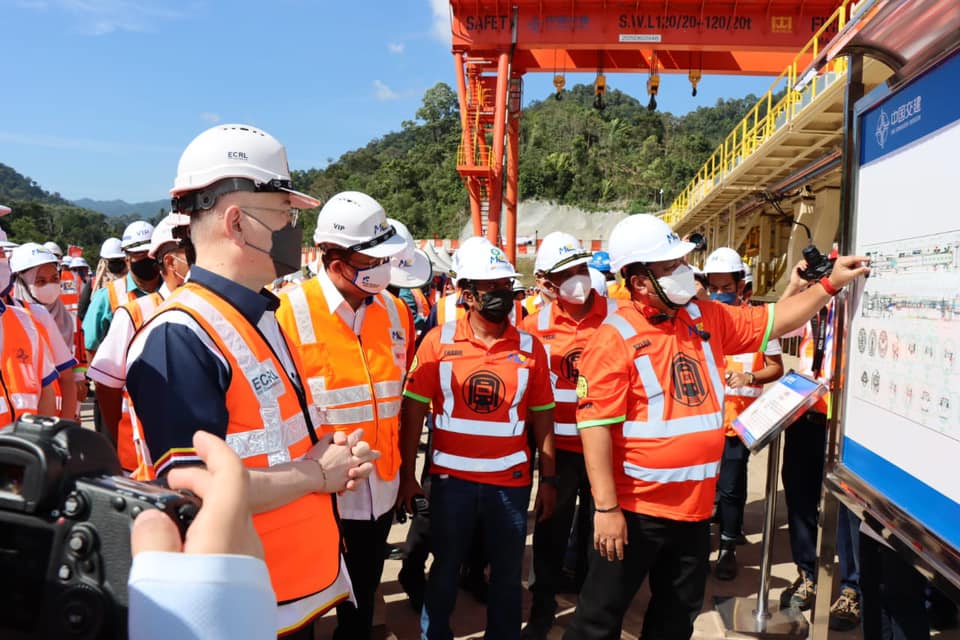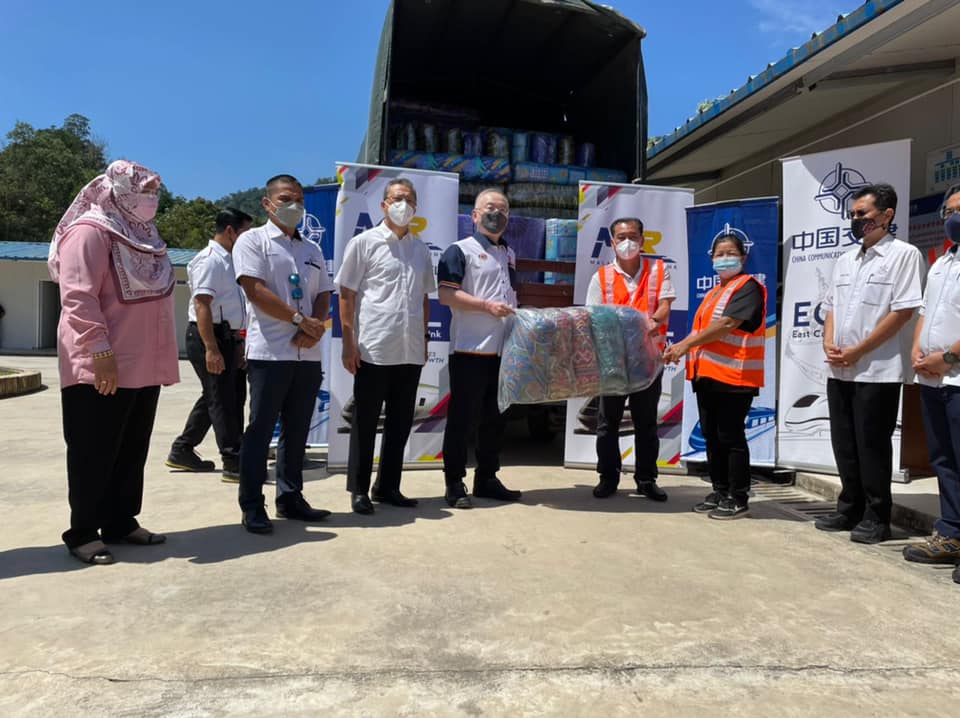
KUALA LUMPUR, Jan 17 – Transport Minister Wee Ka Siong last Wednesday announced his approval of the East Coast Railway Project (ECRL) rail link project Section C2 (Gombak – Serendah – Puncak Alam – Klang Port), which will see the start of works in the first quarter this year.
He said the approval for the project came following the Public Inspection in the last quarter of 2021 and also the approval of the Environmental Impact Assessment (EIA), Social Impact Assessment (SIA) and also the previous Heritage Impact Assessment (HIA).
He said that a total of 12,797 respondents (98.87 percent) who gave their feedback on the project, which was up for public scrutiny from September to November 2021, agreed to the project while another 145 stated their objection to the project.
Wee said the small percentage of respondents protesting the ECRL for Sections C1 and C2 were mostly those who had properties or houses on the route that the rail route had been planned on. Apart from property owners, he did not provide the details of the remaining of the 145 entities who had objected to the project or the reasons for the objections.
He said Malaysia Rail Link Sdn Bhd (MRL) had submitted the application for the full approval of C2 section to the Land Public Transport Agency (APAD) which then gave their approval and submitted it to his ministry for approval.
Approval for the ECRL section C section which includes the railway route from Mentakab to Serendah and Port Klang, was officially gained from the Selangor government on December 2, 2021 during a joint media conference chaired by Wee and Selangor Menteri Besar, Dato’ Seri Amirudin Shari, he said, in a statement published on his Facebook last Wednesday.
He said Selangor’s approval will facilitate the re-detailing of the engineering, procurement, construction and accreditation (EPCC) projects for the ECRL.
“This detailed EPCC contract will facilitate the implementation of the improved ECRL construction based on the original route of ECRL launched in August 2017. Although the Selangor State Government’s approval on the Section C Line was finalised in December 2021, MRL had already received the Conditional Approval of the Section C1 Train Scheme on 6 May 2021 after taking into account the original approval of the ECRL on 23 June 2017.”
As of December 2021, the ECRL project has reached a 26.49 percent progress rate, with construction works done on Section A from Kota Bharu to Dungun and Section B from Dungun to Mentakab.
These works include groundwork, tunnel work, bridge work and prefabricated vertical drains or PVD have been focused on more than 168 leading locations in 2021.
Wee said his ministry is committed to continuing to ensure that the development of the project runs smoothly and will benefit the people and country.

The 665 km long double tracking rail line will offer both passenger and freight services with a total of 20 stations from Port Klang in Selangor to Kota Bharu in Kelantan.
While environmentalists remain sceptical of the train service that will have more than 50 tunnels created to enable its run from the west to the east coast of Peninsular Malaysia, mostly cutting across rocky and thick forest areas, the project, which is part of the Chinese government’s Belt and Road Initiative, is expected to bring further economic development and cut travel time to the east coast.